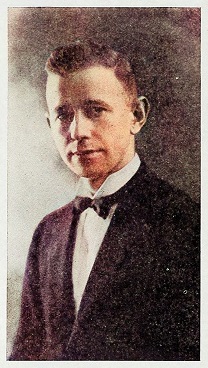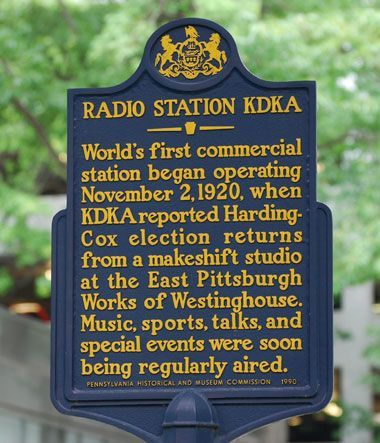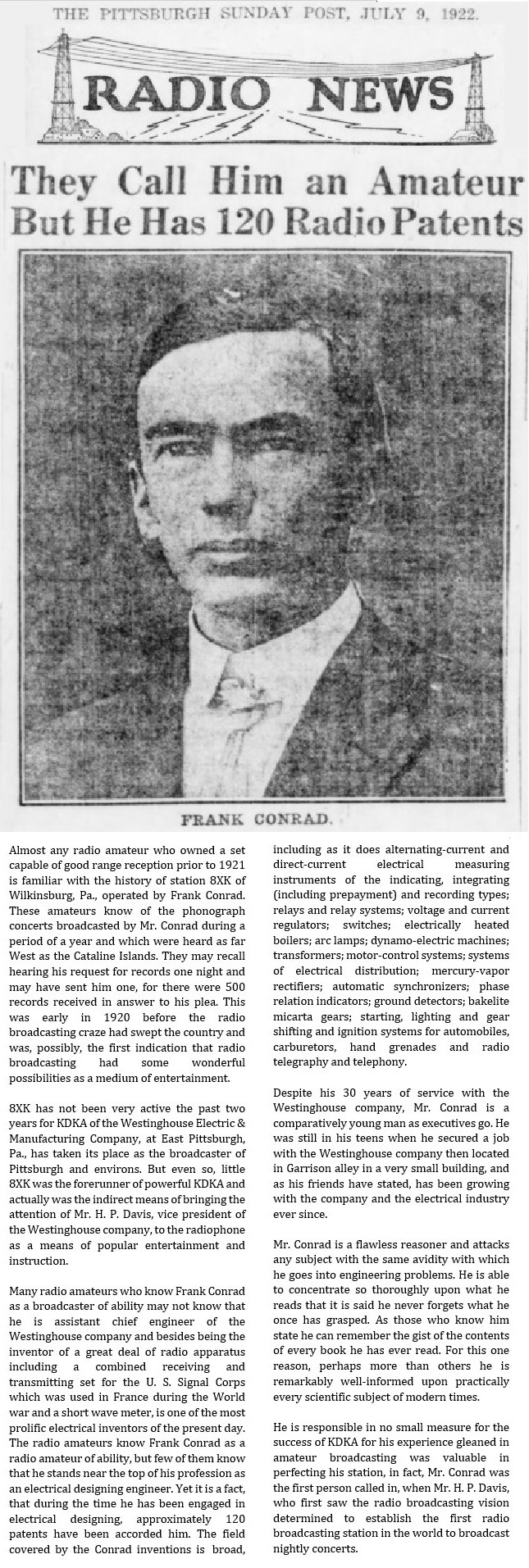1921
The first broadcast having been a success, KDKA headed into the new year.1921 was a year of firsts.
The commercial purpose of the station that is called the first commercial station was to sell radios, not laundry detergent or steak knives. Westinghouse needed content to promote the sale of radios. Public events in 1921, like the presidential election months earlier,became the source of that content.
A new market was created through the synergy of a product that needs content which in turn benefits from the product. That is how commercial broadcasting was born.
Here are the most significant KDKA “firsts” during 1921:
January 2, 1921
First broadcast of a regularly scheduled church service: Calvary Episcopal Church, Pittsburgh. This was also the first remote broadcast on radio.
January, 1921
First full-time radio announcer hired: Harold W. Arlin. Arlin introduced such celebrities as William Jennings Bryan, Will Rogers, Babe Ruth, and Herbert Hoover over the KDKA airwaves.
March 4, 1921
First broadcast of a presidential inaugural address: Warren G. Harding, the 28th President of the United States.
March 10, 1921
First broadcast from a theater: The Davis Theater in Downtown Pittsburgh, featuring soprano Ruth Roye.
April 11, 1921
First broadcast of a sporting event: a 10-round, no decision fight between Johnny Ray and Johnny Dundee in Pittsburgh’s Motor Square Garden.

May 19, 1921
First broadcast of government market reports, which laid the groundwork for all future farm programs.
August 5, 1921
First radio play-by-play of a professional baseball game: the Pittsburgh Pirates 8-5 victory over the Philadelphia Phillies at Forbes Field.
September 20, 1921
World’s first radio newsroom, with remote pick-up facilities at the Pittsburgh Post.
October 8, 1921
First play-by-play broadcast of a football game: Pitt’s victory over West Virginia University.
While KDKA was building interest in its programming with what became historic firsts, another side of its legacy was in its formative stages: the development of shortwave broadcasting. In the first two decades of the 20th century, an erroneous understanding had taken hold:
“Longer distances require longer waves”.
In 1921, Frank Conrad and the amateur radio operators started to challenge this “settled science”.

